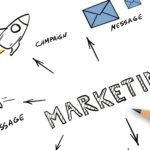[ad_1]
In a job interview, every question is an opportunity to showcase your skills, experience, and fit for the company. One question that often stumps candidates is, “What’s your work ethic?”. It’s a broad question, but it speaks directly to your approach to work, your level of commitment, and how you handle tasks, challenges, and teamwork. Answering this question effectively can give interviewers a glimpse into your values, your reliability, and your ability to contribute positively to the workplace.
In this article, we’ll break down how to answer this question confidently, providing strategies, examples, and tips to help you impress interviewers with your work ethic.
How to answer questions about work ethic
1. Understand the importance of work ethic
Before crafting your answer, it’s important to understand why interviewers ask this question. Work ethic refers to your attitude, habits, and dedication to doing your job well. Employers want to ensure that you’re reliable, consistent, and able to perform well under various conditions. Your work ethic can reveal how you manage deadlines, handle stress, collaborate with others, and approach problem-solving.
2. Tailor your answer to the job
Every job requires different qualities. For instance, a marketing role might value creativity and adaptability, while an engineering role might prioritise precision and attention to detail. Make sure to tailor your response to highlight the work ethic traits that are most relevant to the position you’re applying for. If the role demands a lot of independent work, emphasize your self-motivation and discipline. If teamwork is crucial, focus on your ability to collaborate effectively with others.
3. Showcase key traits of a strong work ethic
When answering the question, it’s helpful to focus on specific traits that demonstrate your strong work ethic. Here are a few examples:
- Reliability: Discuss your dependability and how you consistently meet deadlines or handle responsibilities without needing constant supervision.
- Commitment: Share examples of times when you went above and beyond to complete a task or reached a long-term goal.
- Time management: Explain how you prioritise tasks and manage time effectively to ensure productivity, especially when juggling multiple projects.
- Problem-solving: Demonstrate your ability to approach challenges with a positive mindset, finding solutions even in stressful or difficult situations.
- Attention to detail: Illustrate how your careful attention to detail ensures high-quality work and prevents errors from slipping through the cracks.
4. Use real-life examples
Rather than providing a generic answer, bring your work ethic to life by sharing real examples. Consider times in your previous roles where your work ethic helped you succeed. For example:
- “In my previous role as a project manager, I was responsible for overseeing multiple projects at once. I developed a system to prioritise tasks based on urgency and importance, ensuring that all projects were completed on time and to the highest standard. My commitment to meeting deadlines was key to maintaining strong client relationships.”
- “As a team leader, I focused on creating a collaborative environment where everyone felt valued. I encouraged open communication, which led to increased productivity and a positive team dynamic. I believe my strong work ethic stems from not just focusing on my own performance but helping the team thrive.”
5. Avoid overused clichés
While it’s tempting to say things like, “I’m a perfectionist” or “I work well under pressure,” these answers can feel shallow or overly rehearsed. Instead, focus on what makes you unique and how your work ethic aligns with the company’s values. Cliché responses may come across as insincere, so try to avoid them in favour of concrete, specific examples that paint a fuller picture of your capabilities.
6. Highlight adaptability and growth
Employers value employees who can adapt to changing circumstances. When discussing your work ethic, mention how you’ve been able to adjust to new challenges, environments, or job responsibilities. Highlighting your growth mindset shows that you’re willing to learn, grow, and continue improving, which is a key trait of someone with a strong work ethic.
7. Be honest
While it’s important to present yourself in the best possible light, it’s equally important to be authentic. If you’re someone who thrives on structure and prefers clear guidelines, that’s perfectly fine! Just make sure you communicate how your work ethic aligns with the job you’re interviewing for. Being genuine will help you build rapport with the interviewer and create a stronger connection.
Example responses:
Example 1:
- “I’d describe my work ethic as disciplined and proactive. I always make sure to prioritize tasks based on urgency, and I’m committed to delivering high-quality work on time. In my last job, I was often tasked with tight deadlines, and I made sure to communicate openly with my team to ensure we met our goals without compromising quality.”
Example 2:
- “I would say my work ethic is focused on collaboration and consistent improvement. I value working closely with my team to achieve shared goals, but I also ensure I hold myself accountable for my responsibilities. When challenges arise, I approach them with a problem-solving mindset and remain adaptable in the face of change.”
8. End with a positive note
To close your answer, end on a note that ties your work ethic back to the value you can bring to the company. Let the interviewer know that your work ethic aligns with their organisational culture and goals.
For instance: “I believe my work ethic would be a great fit for this role, as I am dedicated to achieving both individual and team goals. I am confident that my approach to work will allow me to contribute positively to your organisation and help drive success.”
When asked to describe your work ethic, it’s your chance to show how you approach work and contribute to a team or organisation. By focusing on key traits like reliability, commitment, and time management, and backing them up with real-world examples, you can answer the question with confidence and impress your interviewer. Keep it specific, avoid clichés, and always tie your work ethic back to how it can benefit the company you’re hoping to join.
[ad_2]
Source link





